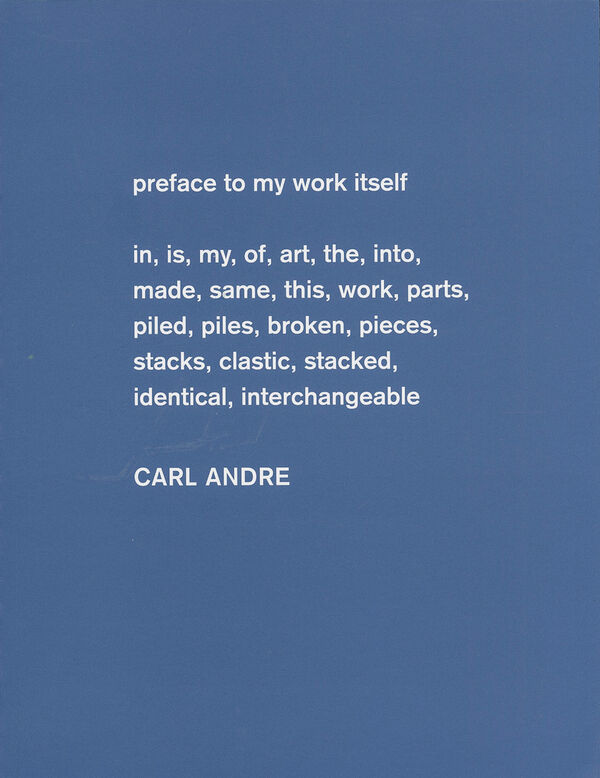Contact
art book cologne GmbH & Co. KG
Deutzer Freiheit 107
50679 Köln
Germany
Opening hours (office and showroom):
Monday to Friday 8 – 17
info@artbookcologne.de
Phone: +49 221 800 80 80
Fax: +49 221 800 80 82
About us
art book cologne, founded by Bernd Detsch in 1997, is a wholesale company and specializes in buying and selling high quality publications in art, art theory, architecture, design, photography, illustrated cultural history and all related subjects internationally. Our team includes specialists in art, culture, music, book trade and media but in spite of our diversity we have one common ground: the enthusiasm for unique art books.
We purchase remaining stocks from museums, publishers and art institutions. We sell these remainders to bookstores, museum shops, and art dealers all over the world.
Carl Andre – Sculpture as Place (DE)
| Publisher | Walther König |
| Year | 2014 |
| Cover | Softcover |
| Language | German |
| ISBN | 978-3-86335-951-5 |
| Pages | 400 |
| Weight | 1722 g |
| More | |
| Author(s) | Yasmil Raymond, Philippe Vergne |
| Contributors | Phyllis Tuchman, Brooke Holmes, Arnauld Pierre et al. |
| Type of book | Exhib'publication |
| Museum / Place | Dia Art Foundation, New York & Reina Sofia, Madrid |
| Article ID | art-41653 |
Carl Andre (b. 1935) redefined the parameters of abstract sculpture in the 1960s and 1970s. He was a highly influential voice in the American minimalist movement, recognized for his ordered linear and grid formats.
In the early 1960s, Andre’s creative focus shifted to writing poetry when he took a job as a freight brakeman and conductor for the Pennsylvania Railroad. His poems echoed and extended the themes in his sculptural work, and his experience with the railroad significantly influenced his choice of materials in later years.
In this stunning catalogue, which accompanies the first retrospective of Andre’s work since 1970, the artist’s legacy is examined in eleven essays by international scholars. The book presents a broad range of sculpture made over the past fifty years, including Andre’s emblematic floor and corner pieces, highlighting his radical use of standardized units of industrial material such as timber planks, concrete blocks, and metal plates.
A vast selection of Andre’s previously unpublished concrete poems, together with letters, postcards, ephemera, and documentation of important installations, further complements our understanding of an essential figure in the history of contemporary art.

